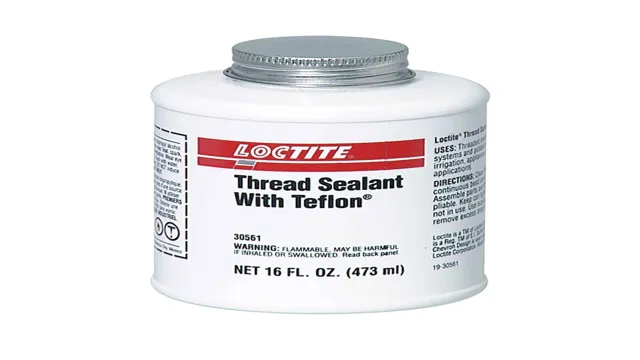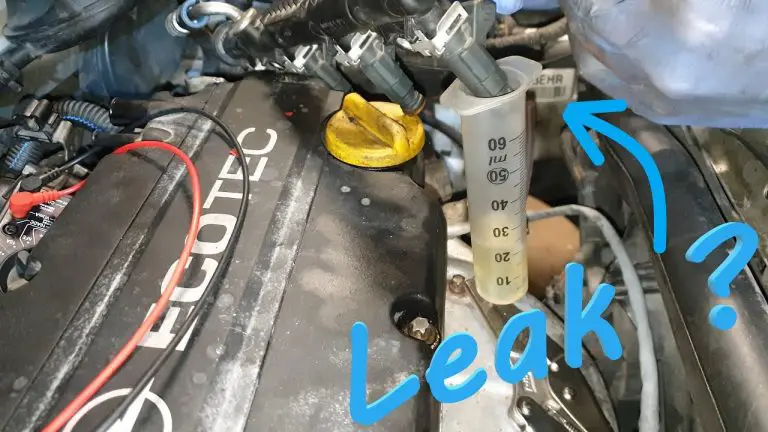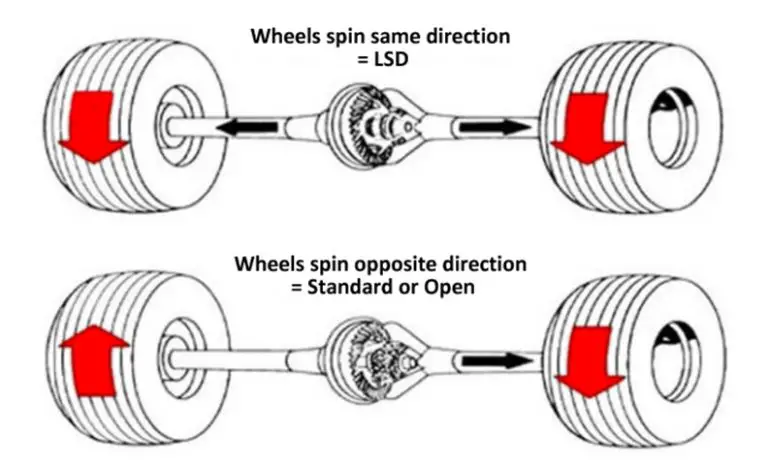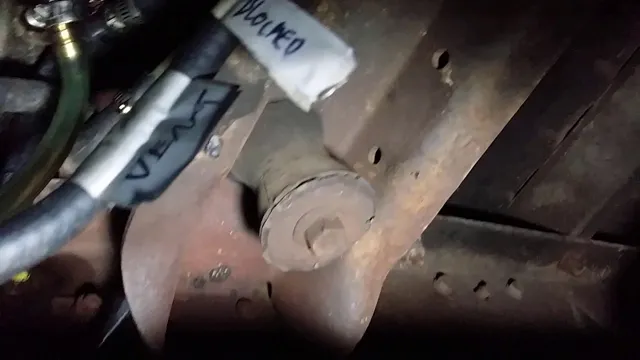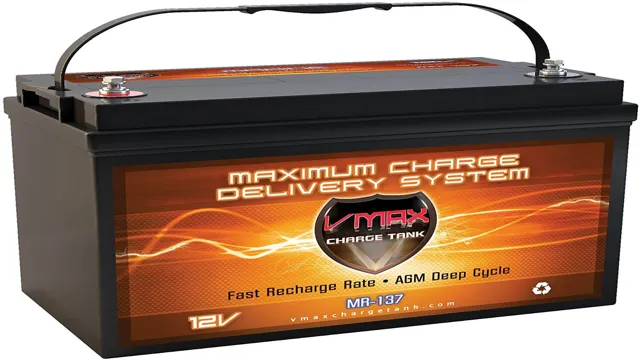Revive Your Engine with These Easy Steps: How to Clean a Diesel Fuel Tank Without Removing It
Is your diesel tank in dire need of a cleaning but you can’t afford the downtime or cost of removal? Have no fear, there is now a solution to your problem. Clean your diesel tanks without removal! With the traditional method of cleaning diesel tanks, it can take days and a lot of money to remove and clean the tanks. But with this new technology, equipment can be inserted and the tanks can be cleaned without ever having to leave the ground.
Not only does this save time and money, but it also helps prevent contamination. When diesel tanks are not cleaned regularly, they can build up contaminants such as sludge, water, and microbial growth which can lead to engine failure or even worse, environmental hazards. By utilizing this new method, not only are you saving money and time, but you are also taking the necessary precautions to prevent future issues.
So why wait? Contact your local diesel tank cleaning professionals and get your tanks cleaned without removal today!
Why You Should Clean your Fuel Tank
If you own a diesel-powered vehicle or machine, it’s essential to ensure that the fuel tank is clean and free from debris. A dirty fuel tank can cause numerous issues, including decreased performance, damaged engine components, and even complete engine failure. The good news is that you don’t always have to remove the fuel tank to clean it.
There are ways to clean a diesel fuel tank without removing it, such as using a fuel tank cleaner or fuel system cleaner. These cleaners can dissolve and remove any build-up and debris inside the fuel tank, ensuring that your engine operates smoothly and efficiently. Overall, regularly cleaning your diesel fuel tank can prevent costly repairs and help your diesel vehicle or machine last longer.
Save Money, Protect your Engine, Increase Efficiency
Cleaning your fuel tank may seem like an unnecessary expense or hassle, but it can actually save you money in the long run. Dirt and debris can accumulate in your fuel tank over time, which can clog your fuel filter and injectors. This can lead to decreased engine performance and even engine damage.
By regularly cleaning your fuel tank, you can prevent these issues from occurring and ensure that your engine is running smoothly. Furthermore, a clean fuel tank can increase fuel efficiency, which means you’ll save money on gas in the long run. Think of cleaning your fuel tank as similar to changing the oil in your car – it’s essential for ensuring your vehicle runs smoothly and preventing potentially costly damage in the future.
So, don’t neglect this important aspect of car maintenance – your engine (and wallet!) will thank you.

Tools You Need to Clean a Diesel Tank
If you’re wondering how to clean a diesel fuel tank without removing it, there are some essential tools you’ll need to get the job done right. Firstly, you’ll need a fuel pump that can pump diesel out of the tank. Next, you should have a generator or battery charger to power the pump.
A set of wrenches, screwdrivers, pliers, and ratchets will be necessary for detaching hoses, clamps, and other parts connecting the tank to the engine. Once you’ve taken the tank off, you’ll need a set of rubber gloves, eye protection, and a mask to protect yourself from getting hurt. Finally, a wire brush and cleaning solution such as vinegar or baking soda are vital for removing contaminants from the tank.
With these tools and the right instructions, you can clean a diesel fuel tank without having to remove it.
Shop Vac, Fuel Pump, Fuel Filters, Hose, Cleaning Agents
Cleaning a diesel tank can be a daunting task, but with the right tools and equipment, it can be done effectively and efficiently. One of the essential tools you need is a shop vac that can handle wet and dry debris. The shop vac will help you remove any sludge, water, or debris that may have accumulated at the bottom of the tank.
To prevent clogging the fuel system, you will also need to replace the fuel pump, fuel filters, and hose after cleaning the diesel tank. You can use commercial cleaning agents or household items such as dish soap, baking soda, or vinegar to clean the tank’s interior. Make sure you follow the cleaning agent’s instructions and rinse the tank thoroughly to ensure that no residue remains.
Lastly, safety precautions must be observed when cleaning a diesel tank. Always wear protective gear, turn off all ignition sources, and ventilate the area to prevent any explosions or fires. Remember, a clean diesel tank not only ensures smooth engine performance but also prolongs the equipment’s life.
Step-by-step Guide to Cleaning a Diesel Tank
If you’re looking to clean a diesel fuel tank without removing it, there are a few steps you can take to do so safely and effectively. First, make sure you have the necessary tools and equipment, such as a fuel transfer pump, a filtration system, and safety gear. Next, drain the tank of any remaining fuel using the transfer pump.
After this, use the filtration system to remove any debris or contaminants from the fuel. Once the fuel is cleaned, use a mixture of detergent and hot water to clean the inside of the tank, making sure to agitate the solution well. Finally, rinse and dry the tank thoroughly before refilling it with clean fuel.
It’s important to remember to take safety precautions throughout the process, such as wearing gloves and eye protection, to avoid any potential hazards. By following these steps and taking the necessary precautions, you can successfully clean your diesel fuel tank without removing it.
Disconnect Electrical Connections, Drain Fuel, Remove Fuel Lines
Cleaning a diesel tank can be a daunting task, but with the right tools and procedures, it can be done efficiently. The first step is to disconnect all electrical connections to prevent any potential hazards. Next, it is essential to drain the fuel entirely so that you can work safely inside the tank.
You can do this by either using a hand pump or siphon pump. Once the fuel has been removed, it is time to remove the fuel lines using pliers or a wrench. Be sure to have a container ready to catch any leftover fuel that may spill out.
Once all the fuel lines have been disconnected, you can then proceed with cleaning the interior of the tank, removing any dirt, debris, and contaminants. Don’t forget to inspect for any damages, such as rust, cracks, or holes, that may require repairs. Finally, reconnect all fuel lines and electrical wiring, and fill the tank with fresh fuel.
By following these steps, you can have a clean diesel tank that functions at optimal levels.
Use Fuel Pump and Filters to Remove Debris and Sludge
Cleaning a diesel tank can be a daunting task, but there are a few steps that can make the process much easier. One of the most effective ways to remove debris and sludge from a diesel tank is to use the fuel pump and filters. First, you’ll need to turn off the engine and disconnect the fuel lines from the tank.
Then, use the fuel pump to extract as much fuel as possible from the tank. Next, replace the filters, as they are likely clogged with debris and sediment. After this, you can use a cleaning solution to remove any remaining sludge or deposits from the tank.
Rinse the tank thoroughly with water and allow it to dry before reattaching the fuel lines and refilling the tank with fresh diesel. By following these steps, you can ensure that your diesel tank is clean and free of debris, prolonging the life of your engine and ensuring optimal performance.
Flush Tanks with Cleaning Agents, Use Hose to Remove Residue
Cleaning a diesel tank is an important part of maintaining the reliability of your diesel engine. If your tank is dirty and contaminated, the fuel system can become clogged, causing the engine to perform poorly or even shut down. Here’s a step-by-step guide to cleaning a diesel tank.
First, turn off the engine and disconnect the battery. Drain all the fuel from the tank and remove any debris or sediment with a clean cloth. Then, flush the tank with a cleaning solution, allowing it to sit for a few hours.
After that, use a hose to rinse the tank and remove any remaining residue. Finally, let the tank air dry, reconnect the battery, and refuel with fresh, clean diesel. It’s important to use a cleaning solution that’s specifically designed for diesel tanks and to follow the manufacturer’s instructions carefully.
By following these simple steps, you can keep your diesel tank clean and your engine running smoothly, ensuring reliable performance and fewer breakdowns.
Dry the Tank, Refill with Fuel, Reconnect Electrical Connections
Cleaning a diesel tank can be a messy and time-consuming task, but it is essential to ensure your diesel engine runs smoothly and efficiently. Here is a step-by-step guide to cleaning a diesel tank. First, disconnect the fuel lines and drain the tank completely.
Next, remove any remaining fuel and debris from the tank with a hand pump or vacuum. Then, use a cleaning solution to remove any sludge or build up in the tank, and let it sit for a few hours or overnight. Once the cleaning solution has done its job, rinse the tank thoroughly with fresh water until all traces of the solution are removed.
Finally, dry the tank completely, refill it with fresh fuel, reconnect the fuel lines and electrical connections, and you’re good to go! By following these steps, you can ensure your diesel tank stays clean and efficient, ultimately extending the life of your engine and saving you money on costly repairs.
Tips and Tricks for Maintaining a Clean Fuel Tank
Maintaining a clean fuel tank is essential to ensure the proper functioning of your vehicle’s engine. Diesel fuel tanks can accumulate residue, water, and dirt over time, which can lead to clogs and decreased performance. Cleaning your diesel fuel tank without removing it can save you a lot of time and money.
Here are some tips and tricks to help you maintain a clean diesel fuel tank: use high-quality fuel filters, consider adding a fuel stabilizer, use an effective fuel treatment, and regularly check your tank’s fuel level and quality. Additionally, avoid overfilling your tank and keep it away from direct sunlight and extreme temperatures. By following these simple tips, you can ensure that your diesel fuel tank stays clean and in good condition, improving the overall performance of your vehicle.
Use Fuel Additives, Regular Inspection, Keep Tanks Full
Fuel tank maintenance is crucial for the longevity of your vehicle. One of the best ways to keep your fuel tank clean is by using fuel additives. These additives work to keep your fuel system free of deposits and contaminants, ensuring that your engine runs smoothly.
Regular inspection is also essential to maintain a clean fuel tank. It’s important to check for any signs of corrosion or rust, as these can lead to fuel leaks and potential engine damage. Keeping your tanks full can also help prevent the buildup of condensation, reducing the risk of bacteria and fungi growth.
Remember, neglecting your fuel tank can lead to costly repairs in the future. By following these simple tips, you can ensure that your vehicle stays in tip-top shape and runs efficiently.
Conclusion and Final Thoughts
In conclusion, cleaning a diesel fuel tank without removing it may seem like a daunting task, but with the right tools and techniques, it can be accomplished with ease. Just like a skilled surgeon, you’ll need to go in through a strategic access point and use the right instruments to extract all the gunk and grime. Remember to take your time and be thorough, as a clean fuel tank is essential for your engine’s longevity and performance.
So go ahead, clean that tank like a boss and enjoy a smoother ride!”
FAQs
What are the risks of not cleaning a diesel fuel tank?
Not cleaning a diesel fuel tank can lead to clogged filters, decreased engine performance, and potential engine damage. Over time, sediment, dirt, and debris accumulate in the tank which can clog filters and cause reduced fuel flow.
What are some ways to clean a diesel fuel tank without removing it?
One method is to use a diesel fuel tank cleaner, which is added to the tank and helps dissolve sludge and other deposits. Another method is to use a fuel polishing system which circulates the fuel through a filter and back into the tank, removing any contaminants. Ultrasonic cleaning is also an option, which uses high-frequency sound waves to break up and eliminate particles and deposits.
How often should a diesel fuel tank be cleaned?
The frequency of cleaning a diesel fuel tank depends on usage and environment, but a good rule of thumb is to conduct a fuel tank cleaning every 1-2 years. For tanks that are used infrequently or in harsh environments, more frequent cleanings may be necessary.
What are some signs that a diesel fuel tank needs to be cleaned?
Signs that a diesel fuel tank needs cleaning include clogged filters, engine performance issues, excess black smoke, and unusual engine noises. Additionally, if the tank has not been cleaned in a significant amount of time or if the fuel has been sitting for an extended period, it may be time for a cleaning.


